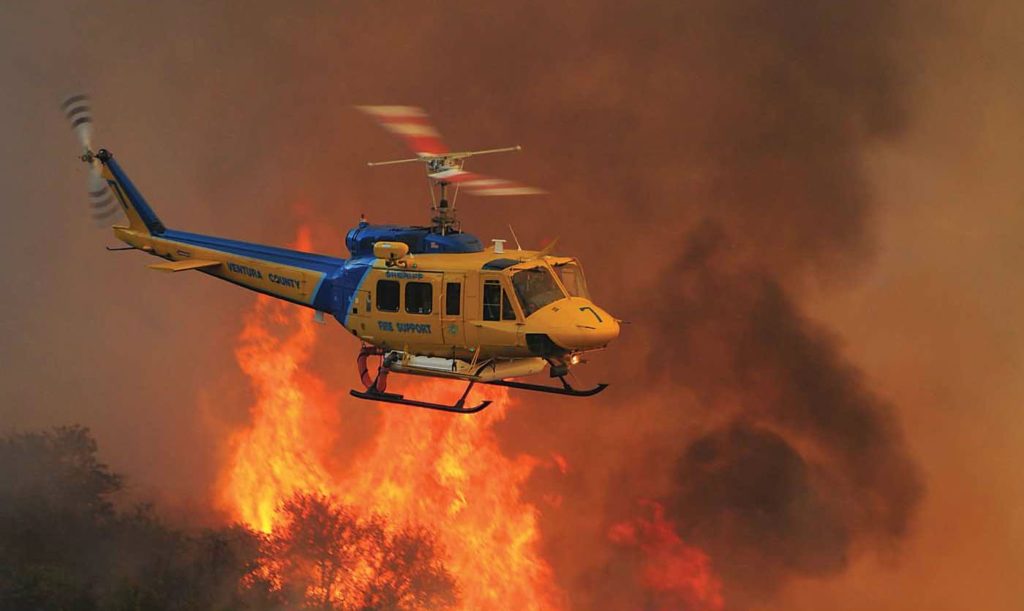Estimated reading time 4 minutes, 49 seconds.
With the wildfire season rapidly approaching (or already started in some locations), and helicopter firefighting now a major part of the industry, it’s a good time to see what the experts predict for this summer.

A look at last year shows that the 2018 wildfire season was again very active, following a recent trend. In the U.S., fires were unusually large and destructive. In California, the largest and deadliest wildfires in the state’s recorded history occurred. In Canada, British Columbia broke its all-time record for area burned — a record which had just been set in 2017. Europe also suffered severe losses from wildfires with dozens of people killed.
The winter of 2018-19 was very wet for most of the U.S. with record-breaking precipitation occurring in some locations. As a result, there is very little ongoing drought moving into the warm season with exceptions being parts of Washington and the Hawaiian Islands. Consequently, the number of wildfires and the acreage burned is well below normal to date.
The extended weather outlook for the summer in the U.S. shows a consistent pattern with below normal temperatures in the middle of the country and warm in the east and west coasts, as well as in Alaska and Hawaii. Almost all of the country is predicted to have normal amounts of precipitation with the exception of the Pacific Northwest where below-normal rainfall is expected, and Hawaii (depending on tropical cyclone activity). The Drought Outlook is predicting drought to persist and expand in Washington and Hawaii. No significant drought is forecast for the rest of the country. Accordingly, an “above normal risk” of wildfires is predicted for western Washington in June expanding to northern Washington and western Oregon by July. An elevated risk also persists throughout the summer in Hawaii.
Typically much of the western part of the U.S. gets little if any rainfall during the warm season. Although precipitation forecasts and resultant fire danger potential may be called “normal,” critical fire weather conditions are still likely to occur. With high fuel loads, a heightened risk of wildfires is predicted for southern Arizona through July and for central and western California throughout the summer and into the fall.
For Canada, the east has been wet but the western part of the country has seen drought conditions in the southern Prairie Provinces where the wildfire season started in the spring. Alberta has seen “extreme” fire conditions with over 700,000 acres burned already. Wildfires are also plaguing British Columbia again. The extended forecast for the summer shows normal temperatures and rainfall in the east but continued warm and dry in the west.
As a result of these weather conditions, fire danger in June is expected to be “very high” to “extreme” over much of the western half of the country, which is fairly typical. The risk is considered higher than normal in southern British Columbia and northern Saskatchewan and Manitoba. In July, the worst conditions are forecast for southern British Columbia. By August, seasonally higher risk and even worse conditions will spread to southern Alberta and Saskatchewan while southern British Columbia will still see an above-normal threat. These same areas are predicted to remain at risk into September.
For Europe, anomalous heat waves have produced an early and troubling start to the wildfire season. The area burned is six times what would normally be expected by this time, and more land has already been burned this year than in all of 2018. France and Spain have been particularly hard hit.
Currently there are areas of significant drought in Spain and France. The forecast for June shows most of Europe warm and dry with some possible drought relief in western and central France. Although warm temperatures should persist through the summer, the dryness is expected to abate somewhat, hopefully lowering fire danger.








